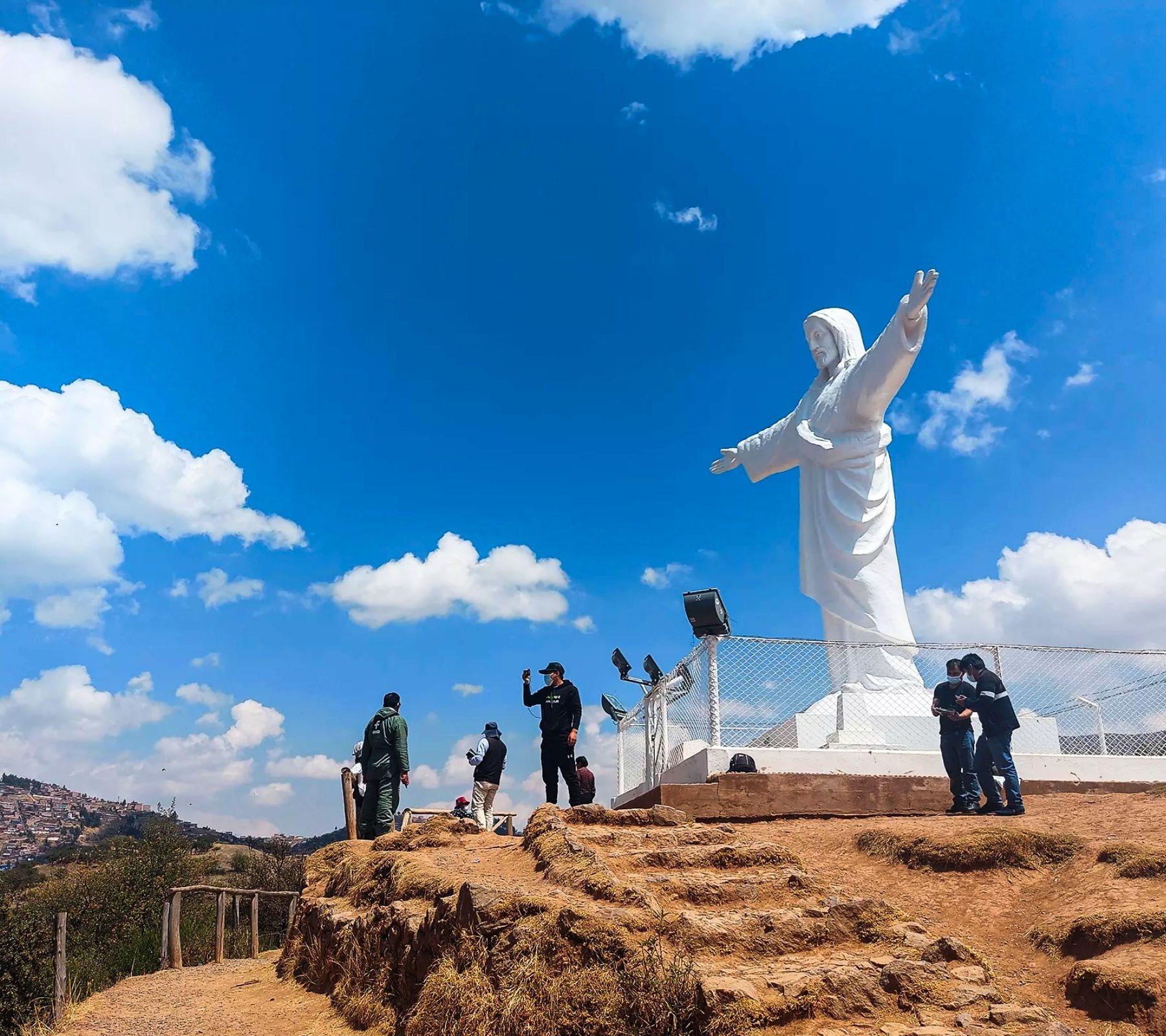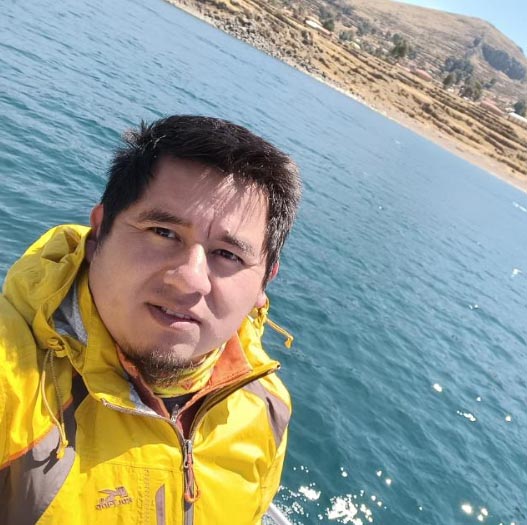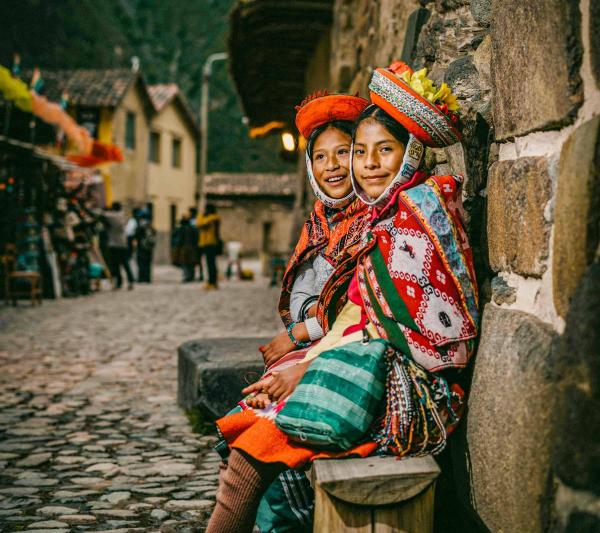Cusco, ancient capital of the Inca Empire, is a city full of history and cultural expressions that surprise at every turn. Among stone streets, colonial temples, and archaeological remains, there are also spots with very remarkable views. One of the most visited is the Cristo Blanco viewpoint, a sculpture that stands with open arms over the city.
Cristo Blanco is an 8 meter high statue located next to the Sacsayhuamán fortress. From there, you can contemplate the entire Cusco valley, with its reddish roofs and cobblestone streets. Its figure symbolizes protection and welcome, and it has become a local icon. Visiting it is easy: entry is free, and you can get there by walking, by taxi, or by the popular "mirabus", an ideal option to enjoy the journey without rush. In this article, we give you the details so you can plan your visit and make the most of this key point in the city.
About the White Christ
- Cristo Blanco is a sculpture of Jesus Christ located on Pukamoqo hill, also known as “red hill”, a place that in Inca Empire times was considered sacred by its inhabitants, as it was believed to contain earth brought from different corners of the Tahuantinsuyo.
- The work was a gift from the Arab-Palestinian community residing in Cusco in 1945, as a gesture of gratitude towards the city that welcomed them. The Cusco sculptor Francisco Olazo was in charge of its creation, using materials such as granite, cedar, clay, iron, and wire to give it shape and resistance against the Andean climate.
- The white sculpture reaches 8 meters in height. Its figure, with extended arms, symbolizes protection and hospitality towards the inhabitants of Cusco and those who visit it. At night, White Christ is illuminated, making it visible from various points of the city.
- The laying of the first stone ceremony took place during the Inti Raymi (Sun Festival) in 1944. Years later, between 1973 and 1974, its structure was reinforced with an iron mesh to ensure its stability.
- Today, Cristo Blanco is among the most visited contemporary monuments in Cusco. In addition to its symbolic and religious value, its location allows for a wide view of the city of Cusco; also from this point, the proximity of other emblematic places such as Sacsayhuaman can be appreciated.
- Access to Cristo Blanco is free. It can be reached by walking from the historic center in approximately 30 minutes, although many opt for taxis or the tourist route on the “mirabus”, which offers photo stops and explanations during the journey.
- In addition, the viewpoint where Cristo Blanco is located is often a chosen place for taking panoramic photographs, both at sunrise and sunset, moments when the Cusco sky offers spectacular colors.
Location
The White Christ is located on the top of Pukamoqo hill, about 5 kilometers from the historic center of Cusco. This hill is very close to the Sacsayhuaman fortress, forming part of the chain of hills surrounding the city. From there, you get an extensive panoramic view of the valley, with views that cover a large part of the city of Cusco.
The approximate height of the place is 3,580 m.a.s.l., which contributes to the wide visual range offered by the viewpoint. The site is accessible both on foot, in a walk that can last between 30 and 45 minutes from the center, and by private vehicle, taxi, or a tourist bus, which includes stops at prominent points along the route.
The Cristo Blanco viewpoint
Cristo Blanco is one of the most outstanding viewpoints in Cusco Peru. From this point, you get a unique panoramic view of the city and the Andean landscapes that surround it, making it an ideal stop for those who want to capture unforgettable images of the land of the Incas.
The Cristo Blanco sculpture is located on the top of Pukamoqo hill, whose name in Quechua means "Red Hill". It was erected in 1945 as a gift from the Palestinian community residing in Cusco, as a sign of gratitude to the city. It measures approximately 8.5 meters high and is built with reinforced concrete. Its figure resembles the famous Christ the Redeemer in Rio de Janeiro, sharing with it the posture of outstretched arms.
Reaching the viewpoint involves ascending a steep slope, from which you can see the valley, the city streets, the Sacsayhuamán fortress, and, in the distance, the majestic Apu Ausangate, one of the highest snow-capped mountains in the Peruvian Andes mountain range.
Cristo Blanco attracts several visitors, especially those who enjoy photography, thanks to the wide landscape. It is also common to see couples taking photos with the city in the background, families creating memories together, or travelers from different parts of the world posing with the sculpture as a witness to their visit to Cusco.
On the other hand, due to the altitude, the weather at Cristo Blanco Cusco can be cool and windy. It is advisable to wear warm, comfortable clothing and appropriate footwear for uneven terrain, in order to enjoy the walk without setbacks. In addition to being a privileged place to enjoy panoramic views, Cristo Blanco has a special value for the Christian community of Cusco. During Holy Week, ceremonies are held in this space, where the statue is decorated with flowers and candles, creating a solemn atmosphere full of devotion.
How to get?
From the center of Cusco you can reach Cristo Blanco on foot, by taxi or by public transport bus:
- On foot – From the Plaza de Armas you must ascend in a straight line towards the San Blas neighborhood. Then you must take the streets 'Siete angelitos' or 'Atoqsayk'uchi' until you reach the main track (Circunvalación road). Finally, you must walk along the track until you reach Cristo Blanco. The journey takes 40 minutes on average.
- By taxi – From anywhere in the center of Cusco you can take a taxi that will take you to Cristo Blanco following the Circunvalación highway or Dos Bosco avenue. The trip takes approximately 15 minutes. The price of the service is negotiated with the taxi driver himself but can cost approximately 2 or 3 dollars.
- By public transport bus - At the 'Mercado Rosaspata' bus stop, buses from the companies 'Señor del Huerto' or 'Cristo Blanco' arrive, which will take you to the monument in approximately 30 minutes. The buses follow the Circunvalación road. The price of the service is 1 Peruvian sol (0.3 dollars).
Other viewpoints in Cusco
1. San Cristóbal Viewpoint
The San Cristóbal Viewpoint is located on a hill overlooking Cusco and is perfect for those seeking wide views of the city. It can be reached both by car and by walking, although the climb is steep. From there, you can see the historic center, the Sacsayhuaman Fortress, and the mountains surrounding the valley.
The place is adorned with a monument dedicated to Pachamama (Mother Earth), a symbol of respect for nature, and usually has small stalls selling local crafts, perfect for taking home a souvenir.
2. Plaza de Armas Viewpoint
The Plaza de Armas is the epicenter of Cusco's social and historical life. Its viewpoint allows you to enjoy the colonial architecture, with direct views of the Cathedral, the Church of the Society of Jesus, and buildings with carved wooden balconies.
From this point, you can observe the daily movement of the city, with street vendors, visitors photographing the central fountain, and locals enjoying their routine. It is an ideal place to sit, rest, and be surprised by the sounds and colors of the surroundings.
3. San Blas Viewpoint
San Blas is one of Cusco's most charming neighborhoods, known for its narrow, cobblestone streets, artist workshops, and bohemian atmosphere. The viewpoint is located at the top of the neighborhood and offers a wonderful perspective of the historic center and the reddish rooftops of the city.
From this point, you can see the San Blas church, famous for its carved wooden pulpit, considered a masterpiece of colonial art. In addition, nearby are artisan markets where you can buy unique pieces made by local hands.
4. Santa Ana Viewpoint
The Santa Ana Viewpoint offers one of the widest and clearest views of Cusco. It is located in the Santa Ana neighborhood, one of the oldest sectors of the city, next to the colonial church dedicated to Santa Ana, considered the mother of Mary and grandmother of Jesus in Christian tradition.
Its location allows you to contemplate both the historic center of Cusco and the hills that surround it; moreover, being one of the highest viewpoints in the city, the panoramic view extends on clear days to cover corners that are out of sight from other points.
As can be seen, there are several observation points and viewpoints in the city of Cusco and in nearby towns. The Cristo Blanco is one of them, and reaching it is very simple. It is a symbol of the union between very different communities and proof of the fusion of cultures, ideas, and religions.
Visit the Cristo Blanco of Cusco on top of Pukamoqo hill and enjoy the wonderful view of the city and the Peruvian Andes. Take the best photos of your trip and visit other nearby viewpoints. The experience of being part of the beauty of the mountains is a gift from Pachamama that will remain in your memory forever.
Other interesting blogs:
- Where is Machu Picchu?
- Machu Picchu Tickets: Upgrade guide 2026
- Skylodge Adventures Suites
- Machu Picchu Weather
If you want to live this great experience do not hesitate to contact us. Reserve our guided trips to Machu Picchu by contacting our travel experts and you will be closer to completing your adventure:












